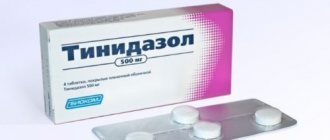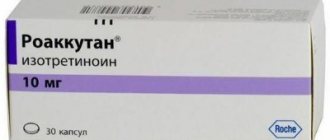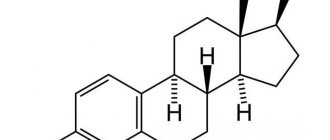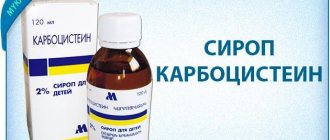Prohibited during pregnancy
Prohibited during breastfeeding
Prohibited for children
Has restrictions for older people
Has limitations for liver problems
Allowed for kidney problems
One of the main indications for prescribing combination drugs, including amlodipine and lisinopril, is hypertension. This combination of active ingredients can be prescribed to patients suffering from arterial hypertension (AH), with ineffectiveness of monotherapy with one of these substances, intolerance to other blood pressure-lowering drugs and resistant hypertension.
Characteristics of Amlodipine
Amlodipine is a calcium channel blocker in cell membranes. In blood vessel cells, these antagonists control the flow of calcium ions, helping to inhibit hypotensive and antianginal effects.
Amlodipine is a calcium channel blocker in cell membranes.
Under the influence of Amlodipine:
- hyperkalemia is excluded;
- arterioles and arteries dilate;
- blood pressure decreases;
- heart cells are saturated with oxygen;
- the contractile function of the myocardium is restored (with tachycardia it decreases, with bradycardia it increases).
Efficiency of the drug:
- even a single dose can provide an antihypertensive effect;
- helps with angina and ischemia;
- has a weak natriuretic effect;
- does not affect metabolism;
- reduces the load on the heart, which allows you to control overstrain of the chest organs during exercise.
Analogs
There are many similar products available in the pharmaceutical industry. List some of them that have similar properties:
Amlessa is a medicine based on amlodipine and perindopril. The average price is 1000 rubles.- Amlopress - in addition to amlodipine, it also contains perindopril. Dispensed strictly according to prescription. The price varies between 500-1000 rubles.
- Bi-Prestarium - the active ingredients are identical to those of Amlessa. Cost – from 350 to 600 rubles.
- Viakoram is an Irish combination drug that has antihypertensive properties.
- Bi-Ramag - the active ingredients are amlodipine and ramipril.
- Sumilar is a Slovenian combination drug. You can buy the medicine strictly according to your prescription. Prescribed for the treatment of hypertension.
How does Lisinopril work?
Lisinopril acts as an ACE inhibitor, suppressing the formation of aldosterone (a hormone responsible for the excretion of Na and K salts) and angiotensin 2 (a hormone that causes vasoconstriction), promoting the production of bradykinin (a peptide that dilates blood vessels).
Under the influence of Lisinopril:
- blood pressure decreases;
- the pressure inside the pulmonary capillaries decreases;
- renal blood flow increases;
- blood supply to the myocardium is normalized;
- hypertrophy of stenotic arteries decreases.
Efficacy of the drug:
- improves blood supply during ischemia;
- restores left ventricular dysfunction after acute myocardial infarction;
- reduces albuminuria (protein in urine);
- does not lead to hypoglycemia.
pharmachologic effect
Combination antihypertensive drug (slow calcium channel blocker + diuretic + ACE inhibitor) Equapress is a fixed combination of antihypertensive components amlodipine, indapamide and lisinopril, which have complementary mechanisms of action that allow control of blood pressure (BP), and also have a synergistic cardioprotective effect.
The combination of amlodipine, indapamide and lisinopril helps prevent the possible development of side effects that occur when prescribing individual components of the drug. For example, by dilating arterioles, slow calcium channel blockers (SCBCs) can cause sodium and fluid retention in the body, which leads to activation of the renin-angiotensin-aldosterone system (RAAS). An angiotensin-converting enzyme (ACE) inhibitor blocks this process and normalizes the body's response to salt load.
ACE inhibitors significantly reduce hypokalemia caused by diuretics.
Joint effect
The combined effect of 2 drugs leads to reactions:
- hypotensive (lowering blood pressure);
- vasodilating (vasodilator);
- antianginal (eliminating heart pain).
The combined effect of 2 drugs leads to an antianginal reaction (heart pain is eliminated).
Combination of substances
Since lisinopril and amlodipine are compatible, it has been possible to develop effective combination agents. One of these is produced under the name “Equator”. The substance contains both of the ingredients discussed. This combination allows you to reduce the risk of side effects inherent in each of the active ingredients separately. Of course, the use of a combined drug is allowed strictly under the supervision of a specialist, since the risks are still high, but the drug in question is tolerated by patients better than each of the drugs separately.
How to take Amlodipine and Lisinopril?
The drugs are available in dosages of 5, 10, 20 mg and are administered orally. Classic treatment regimen:
- 1 dose of 10 mg 1 time per day (morning or evening);
- both tablets require simultaneous use;
- drink with enough water;
- consumption does not depend on food intake.
Antihypertensive drugs should be prescribed with caution to patients undergoing hemodialysis.
Antihypertensive drugs are prescribed with caution to patients who have undergone hemodialysis (extrarenal purification of blood plasma) and in conditions complicated by dehydration (dehydration).
The initial dosage for maintenance therapy in persons with impaired renal function is selected individually.
Throughout the course, it is necessary to monitor renal reactions, K and Na levels in the blood serum. If indicators worsen, the dose is reduced or eliminated.
For diabetes
The combination of diabetes mellitus and arterial hypertension increases the risk of micro- and macrovascular complications. Therapy with Lisinopril and Amlodipine improves vascular function in patients with diabetic and hypertensive nephropathy. For diabetes, taking medications is indicated under the supervision of a doctor.
For diabetes, taking the drugs in question is indicated under the supervision of a doctor.
From pressure
These antihypertensive drugs are indicated for the treatment of high blood pressure, except for the first 4 weeks after a heart attack. After the time necessary to restore clinical parameters, the complex is taken according to the classical regimen (10+10 mg 1 time per day).
Negative reactions
Since combination medications contain two active components, side effects can be observed from both Lisinopril and Amlodipine. If side effects are detected in the patient, you should stop taking this combination and switch to monotherapy or a combination of other active substances.
Negative reactions that can be caused by Lisinopril:
- Decreased levels of red blood cells, platelets, leukocytes, granulocytes, hemoglobin, and blood glucose levels.
- Neurological symptoms: temporal and parietal pain, loss of orientation, changes in peripheral sensitivity, disturbances in taste perception and sleep, depression, syncope.
Decreased blood pressure below normal, myocardial infarction, stroke, increased heart rate, cold fingers and toes.- Skeletal muscle spasms.
- Cough, inflammatory processes of the bronchial tree, nose, sinuses, lungs, dyspnea, bronchospasm.
- Dyspeptic symptoms in the form of nausea, vomiting, abdominal pain, lack of appetite, changes in taste, inflammation of the pancreas, liver up to hepatocellular failure, jaundice.
- Allergic manifestations: angioedema, rash, alopecia.
- OPN.
- Gynecomastia, impotence.
- Unstable secretion of vasopressin.
- Malaise, decreased performance.
- An increase in some indicators of TAM and TBC: urea, creatinine, transaminases, potassium, bilirubin. Positive results for antinuclear antibodies.
Taking Amlodipine can cause:
- Leukopenia, thrombocytopenia.
- Allergic reactions.
Hyperglycemia.- Mood disturbances, hyperesthesia.
- Diplopia.
- Tinnitus.
- Increased heart rate and other rhythm disturbances, MI.
- Hot flashes, drop in blood pressure, vasculitis.
- Problems with the respiratory system.
- Abdominal pain, dyspeptic symptoms, constipation, diarrhea, dry mouth, inflammation of the pancreas, stomach.
- Liver inflammation, jaundice, increased transaminases.
- Severe allergic manifestations.
- Pain in the joints, muscles, skeletal muscle cramps, soreness in the back.
- Nocturia, frequent urination.
- Gynecomastia, impotence.
- Swelling, fatigue, chest pain, asthenia.
- Anorexia.
Doctors' opinion
Antonova M.S., therapist, Tver
The complex has long proven itself positively. Amlodipine may cause an adverse reaction in the form of edema. And the appearance of seizures is relieved by prescribing Phenytoin.
Kotov S.I., cardiologist, Moscow
A popular and effective combination. The only recommendations are: do not buy domestic Amlo and exclude diuretics.
Skurikhina L.K., endocrinologist, Naro-Fominsk
Do not self-medicate. Both medications have a longer list of contraindications. It is necessary to constantly monitor blood pressure, otherwise the onset of acute hypotension may be missed.
Contraindications
Medicines are not recommended for use in patients:
- with unstable angina;
- with low blood pressure;
- with swelling of the larynx;
- with high sensitivity to the substances included in the composition;
- with impaired liver function;
- with lupus erythematosus.
Medicines are not used in pediatric practice and are contraindicated for women during pregnancy and lactation. Caution must be exercised when prescribing drugs against the background of dehydration and after hemodialysis.
Amlodipine is not used in pediatric practice and is contraindicated in women during pregnancy and lactation.
It's possible, but very carefully
Sometimes a combined drug is prescribed for aortic stenosis, certain types of myopathy, and cerebrovascular pathologies. Such conditions require increased attention. It is important to regularly check the patient’s condition and monitor the performance of internal systems and organs. Care is required if the patient is required to use potassium-sparing diuretics, potassium preparations, or potassium salt substitutes. Persons with excess potassium in the body, lack of sodium, as well as those suffering from myelosuppression, diabetic disease, and renal symmetrical arterial stenosis deserve special attention.
Very carefully, a combination medicine for high blood pressure is prescribed if a person has undergone a kidney transplant, is forced to endure hemodialysis, suffers from primary type aldosteronism, or eats food with a strict salt restriction. The need to use substances that inhibit the enzyme compound CYP3A4 and inducers of this enzyme requires regular monitoring of the patient's condition.
Combination: is it dangerous?
People who have been prescribed a combination substance to control blood pressure sometimes wonder how great the risks are associated with the possibility of the ingredients interacting with each other. Tests have shown that the risk of such a chemical interaction is practically minimal. The dependence of the half-life, maximum concentration or characteristics of the distribution of substances in the body was tested. Correction of these parameters by using the drugs in combination or separately has not been established. There was no dependence on the period of the meal. Food does not correct the level of absorption of compounds. Long-term circulation of ingredients in the circulatory system allows the drug to be taken once daily.
Pharmaceutical action
Antihypertensive combination drug. It has a hypotensive and antianginal effect. Lisinopril is an ACE inhibitor, reducing the formation of angiotensin II and aldosterone, while simultaneously increasing the formation of bradykinin (a vasodilator mediator). Affects tissue RAAS. Reduces OPSS, blood pressure, preload and afterload, pressure in the pulmonary capillaries, does not affect heart rate, while it is possible to increase the IOC and increase blood flow in the kidneys. Arteries dilate to a greater extent than veins. Improves blood supply to ischemic myocardium. With long-term use, it reduces hypertrophy of the myocardium and the walls of resistant arteries. Slows the progression of LV dysfunction after myocardial infarction not complicated by HF. Effective for arterial hypertension with low renin levels, reduces albuminuria (by lowering blood pressure, changing the hemodynamics of the glomerular apparatus). Does not affect glucose levels in patients with diabetes. The hypotensive effect develops 1 hour after administration, the maximum effect is after 6 hours, the duration of action is 24 hours. When treatment is stopped, the syndrome of “hepatic” enzymes and hyperbilirubinemia does not occur; rarely - the appearance of antinuclear antibodies, acceleration of ESR. Overdose. Symptoms: excessive peripheral vasodilation, marked decrease in blood pressure, tachycardia. Treatment: given the slow absorption of amlodipine, it is necessary to lavage the stomach and prescribe an activated one; symptomatic therapy (with a pronounced decrease in blood pressure - elevated position of the limbs, intravenous administration of calcium gluconate, dopamine), control of blood pressure, diuresis, water-electrolyte balance. Hemodialysis is ineffective: lisinopril is dialyzed; amlodipine, due to its pronounced binding to blood proteins, is not removed by hemodialysis.
special instructions
In case of dehydration, treatment should begin after correction of hyponatremia and restoration of blood volume (to prevent a sharp decrease in blood pressure). After taking the first dose, it is necessary to monitor blood pressure, especially in dehydrated patients taking diuretics and/or with hyponatremia. In case of decompensated CHF, coronary artery disease, cerebrovascular diseases, the drug can cause a pronounced decrease in blood pressure, myocardial infarction or stroke. During treatment, body weight monitoring, dental observation, and blood monitoring are necessary to identify possible agranulocytosis. With chronic renal failure (renal artery stenosis, hyponatremia, dehydration, CHF), there may be a deterioration in kidney function, acute renal failure, reversible after cessation of treatment. If angioedema of the face, extremities, lips, tongue, epiglottis or larynx develops, treatment is stopped immediately. Angioedema of the larynx can be fatal. Swelling of the tongue, epiglottis, and larynx can cause airway obstruction. It is necessary to administer subcutaneously 0.3-0.5 ml of 0.1% solution or slowly intravenously 0.1 ml, corticosteroids, antihistamines; control of vital body functions. Concomitant use of polyacrylonitrile membranes for dialysis with an ACE inhibitor may provoke anaphylactic shock; their simultaneous use should be avoided, or a different type of dialysate membrane or another antihypertensive drug should be used. Carrying out desensitization against arthropods during treatment with an ACE inhibitor may cause an anaphylactic reaction (it is necessary to temporarily interrupt treatment with the ACE inhibitor). In elderly patients, both active substances are detected in the blood in higher concentrations, but the effectiveness does not change (should be taken into account when selecting the dose). If pregnancy occurs, the drug should be stopped as soon as possible. Taking lisinopril in the II-III trimesters of pregnancy can lead to fetal death; due to a decrease in the amount of amniotic fluid, it can lead to deformation of the bones of the skull and face, impaired development of the limbs, and hypoplasia of the lungs. During the treatment period, it is necessary to refrain from driving vehicles and engaging in potentially hazardous activities that require increased concentration and speed of psychomotor reactions.








